At the beginning of every project, you’ll need to know what the project is about, its target audience, goals and many more details to make the project a success. To gather all that information and get everybody on the same page, it’s most important to include the discovery phase at the start of every project.
While every agency has its own processes and internal structure, it is safe to say that every agency uses similar steps during the discovery phase. To go into detail and give an idea of the most common steps, we'll describe the processes we follow here at Saigon Digital.
The Saigon Digital Process
The Discovery Phase at Saigon Digital is made up of 6 steps that are more or less time-consuming depending on the project. With every client being different, we constantly adapt and improve our process to meet every client’s individual needs. For our clients with have a bigger budget, that choose a bespoke design and development route we include a very in-depth discovery phase.
- Research
- Definition
- Definition Techniques
- Research previous work
- Goals
- Sprint questions
- Roadmap
- Demos/Sketches
- Adapting the process
- Deliverables
- Using our findings
In the following paragraphs, we'll explain a bit of every step and go into detail for key steps that apply to every client.
1. Research
Research is the first and crucial step. During the research step, we are not providing any final solutions yet. This stage is all about getting to know the client and getting a feel for their work.
At this step, we start the project brief. The client can initiate the brief if they already know what direction the project is going towards or is created in collaboration with the client and Saigon Digital. Usually, we have an initial meeting or call where the client explains his vision.
To make this vision reality, there will be a lot of clients’ suggestions and recommendations from Saigon Digital. Depending on the client, these meetings usually take between 30 min to 2 hours. Typical topics are business background, years in business and many more. These details help define, adapt and tailor all future steps in the discovery phase precisely to our clients’ needs.
2. Definition
The research step determines what we need to know before starting the next steps like design and development. It also helps to set the direction for the whole discovery step but doesn’t quite define it deeply enough. This is where the definition step comes in. This step takes the findings from the research step and puts them into clear action points and “need-to-know” questions.
Most importantly, this step defines the goal and the total outcome of the project. We always start at the end (the goal or final result) and work backwards to define all necessary steps in between. It is usually a good idea to utilize some discovery techniques, as explained below.
3. Definition Techniques
A big and vital part of these definition techniques is the team involved in the definition process.
From experience, we say it’s usually between 4-6. This number leaves enough room for different opinions and makes feedback and amends to the scope constructive and quick at the same time. You want to have a healthy mix of people familiar with business goals and design and functionality experience.
Research Previous Work
These days, many companies already have a website, online presence and different systems in place. A very effective technique is to assess previous work and see what can be improved, what issues arose and go from there.
An excellent way to look at the problems you find is to see them as opportunities. For example, an ancient website with outdated UX/UI is not bad – it’s great since you have the chance to come up with a fabulous new design that improves UX/UI for your customers.
All previous work can be a good indicator of how the company approached clients and funnelled them through their sales process. However, not all clients have previous work done. Starting from scratch can be very beneficial as well. You can bring in lots of recommendations and make sure the client receives the best project execution and final product possible.
Goals
Another technique is to look at the goals first. We frequently start at this point and work our way back to each necessary step in order to achieve said goal. This technique looks at two questions. The first question we ask is: What is your client looking to achieve? And the second question is: How are we going to accomplish that goal? These two questions must be answered as detailed as possible.
Sprint Questions
One book that we keep at the office for everybody to read is Jake Knapp’s “Sprint”. He states that sprint questions address the obstacles you may face when trying to reach the goal. Those questions should be written down and answered during the discovery phase. This will show potential problems or blockers.
- What is the best way to engage our users?
- How can we make the website more accessible?
- What makes a good user experience?
- How can we earn our customers’ trust?
- What would make customers switch products?
Roadmap
Another technique I personally really like is setting up a roadmap for the whole process. This technique works very well in a team. The roadmap defines every aspect and leaves no questions unanswered. Once all details are defined, it is a handy tool to get an idea about the timeline and an excellent start to your resource planning.
User Journey Mapping
The point of this technique is to define each step the audience will take while they visit your website. This technique requires some imagination and empathy. Start by setting up each audience/user group on one side of a board and their final goal on the other. Think about how each user group starts from opening your website over exploring the homepage and different components to reaching their desired goal. Imagine each step and try to replicate the visitors’ journey. This might show some issues with your initial plans. That can be worked out quickly.
Additional Exercises
These were some of the most used Techniques here at Saigon DIgital. We always try to incorporate new methods and are very flexible depending on the client. Based on our experience, these were some of the most effective, in our opinion.
There are plenty of other techniques out there that might be as or even more helpful for other agencies. It is important always to use the methods you think will work best with the team you have. That might/will be different with every client you have.
Demos/Sketches
After we collected all the information and took note of everything down to the last detail, it’s finally time to concretize your plan.
Every team member should come back with a demo of what they think the way to go should look like. We usually include the sketching and demo of the website in one step. This helps because – once again – you will end up with different ideas and different solutions to problems you pointed out earlier.
This step is especially helpful to get an idea of common ground between different personalities. For example, if all six members of the team – that have different backgrounds and personalities – have the same one detail in their sketch, you can assume that that’s an excellent detail to incorporate.
4. Adapting the Process
As mentioned before, there are more than plenty of resources and exercises to choose from. The most important part of the discovery phase is to adapt it to the specific client and the team you’re working with. Issues arise when you’re conducting an exercise that has no point or bearing on the project. On the other side of the scale, if you realize way down the line that you don’t have all the information you need, you can assume you chose the wrong techniques or left something out of the discovery.
5. Deliverables
Another vital step in the discovery phase: Deliverables—one of the most important lists to set up. Not only are the deliverables defining the project, but they are also getting every stakeholder on the same page. The deliverables are something to refer back to ensure all functionality design ideas etc., are applied accordingly. It’s always important to have deliverables in your discovery.
Getting started
All this work during the discovery phase helps the project down the line. A properly planned project prevents poor performance. I personally am a big fan of an excellent discovery phase that lets no questions unanswered to all people involved in the project.
Once the following steps are reached, it’s good to constantly refer back to the goals set out and regularly bring up the user journey map to ensure the agreed-upon goals are met, and structure is followed.
That being said, the biggest takeaway from this post is – in my opinion – do what you think works and adapt as much as needed. Try different techniques and ways to gather all the information necessary for a successfully completed project.
Interested in starting your discovery phase with us? Send us a message!
FAQs About the Discovery Phase in Projects
1. What is the discovery phase in a project?
The discovery phase is the initial stage of a project where goals, target audience, and requirements are defined. It involves research, discussions, and structured techniques to gather all essential information before design and development begin.
2. Why is the discovery phase important?
A thorough discovery phase ensures everyone is aligned on project objectives, prevents costly mistakes later, and sets a clear roadmap. It saves time, reduces risks, and helps deliver a solution that truly meets client and user needs.
3. What steps are included in Saigon Digital’s discovery process?
Our discovery phase typically includes:
- Research and project brief discussions
- Defining goals and outcomes
- Reviewing previous work and identifying opportunities
- Using techniques like sprint questions, user journey mapping, and roadmaps
- Sketches/demos to visualise ideas
- Deliverables to align stakeholders
4. How does the discovery phase adapt to different clients?
Every client and project is unique, so the process is tailored accordingly. For larger, bespoke projects, we conduct more in-depth research and workshops. For smaller projects, we streamline steps while still ensuring key details and goals are fully covered.
5. What are the deliverables from a discovery phase?
Deliverables typically include documented goals, project scope, user journey maps, sketches or demos, and a roadmap. These outputs serve as a reference point throughout the project, keeping the team aligned and ensuring agreed-upon objectives are met.





